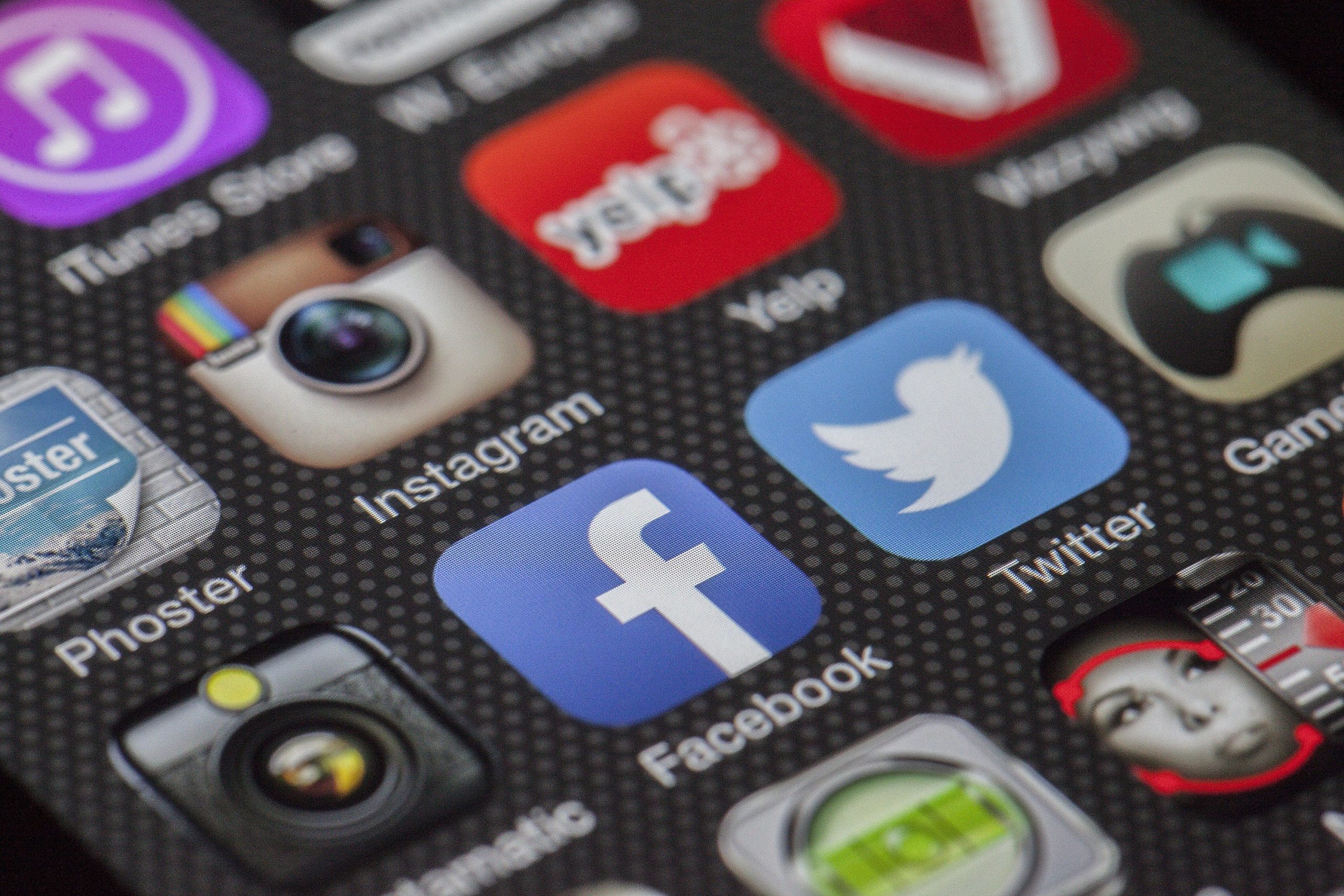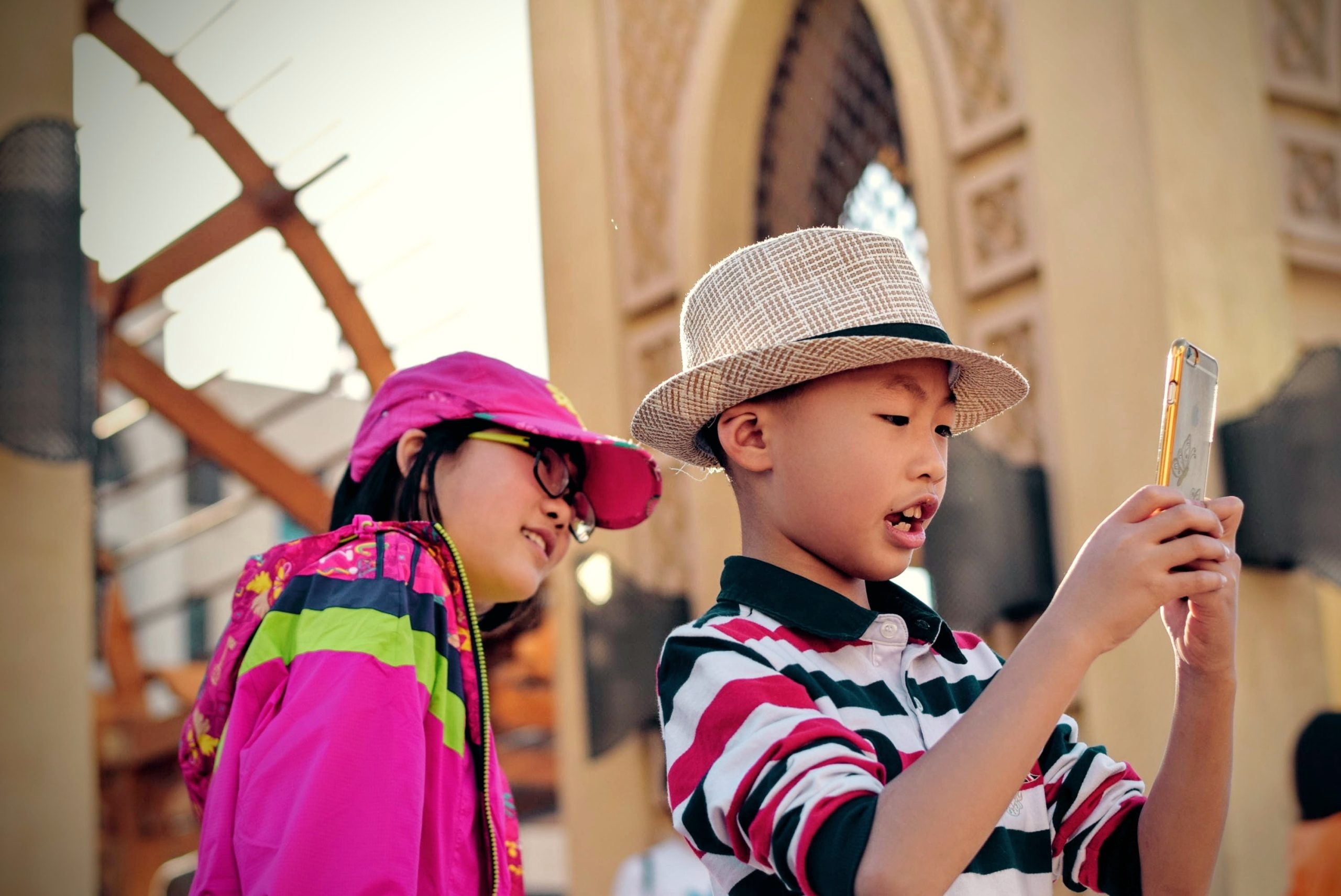Bridging the Gaps
jvillalta and msoto
“The art of communication is the language of leadership.” James Humes
What is Communication?
Communication is a very broad subject as it encompasses many different aspects such as reading, writing, oral, public speaking and interpersonal communication, just to name a few. To take it back a few decades, Shannon and Weaver (1964) developed a communication model describing the components of communication:
- Source – The sender of a message (a speaker)
- Message – The code conveying the information source’s intended meaning (a sentence)
- Transmitter – The apparatus that translates the message into a signal (the mouth and vocal cords)
- Signal – The physical output of the transmitter (sound waves)
- Channel – The medium through which the signal travels (air)
- Receiver – The apparatus that translates the signal back into a message (the listeners eardrum)
- Destination – The interpretation of the message, who must recover the meaning intended by the information source (the listener)
- Noise – Undesired alterations to the signal (a loud cough). (p7)
The aforementioned model is a very technical definition of the communication process, but we can simplify it by understanding that the main elements are a sender, a message, a receiver and how the message is received. Noise is an outside element that can definitely have a negative effect on the communication process. Transmitter, signal, channel, and even the receiver all vary in today’s education system. Simply put, things have changed drastically but the importance of good communication skills is still relevant in today’s digital-dominant world. Research has shown that “training in communication skills has been used successfully as a means of bolstering peer acceptance in school-aged children” (Hazen & Black, 1989, p. 867).
Communication is the key to mutual understanding, getting our own points across, getting a job done effectively and efficiently, and of course, building successful relationships with others. It is no surprise that communication has taken on a whole new meaning with the emergence of social media, text messaging and other technological advances (Newman, 2014). Just 20 year ago, people could be found talking to one another at coffee shops or college campuses around the world. Today, it is very common to see two individuals doing what appears to be talking; however, they are making very little eye contact and their heads are generally looking downward, while they are typing on their phone or device. Written letters and trips to the post office have quickly faded and have been replaced by a quicker way of exchanging information, such as emails and texts. Similarly, communicating over the phone and talking one-on-one with someone has been replaced by text or instant messaging.

Research has revealed that the old way of communicating with one another has been superseded through technology innovations. For instance, Lenhart (2012) found that 49% of teenagers texted on a daily basis with their friends while only 28% of teenagers said they did not text friends (p. 5, para. 3). With social media become an ever more popular way for tweens and teens to communicate, it is important that educators teach students how to interact in these environments in a way that is positive, clear, and safe.
According to a recent survey (2013) conducted by a Desoto group, communication via social media is ever-increasing (23 hours per week on average), while, ironically, 75% of respondents mentioned that they would rather spend more time face to face (Newman, 2014, para. 5). We further demonstrate this at our highest levels of leadership by daily (sometimes hourly) social media posts as opposed to a press conference or official media statement. With so much texting, tweeting, and posting going on, day after day, one might believe that our written communication skills are vastly improving. However, the publication Are They Really Ready to Work? (Casner-Lotto, et al., 2006) states otherwise, citing that 80.9% of high school graduates, 47.3% two-year college graduates, and 26.2% of four-year college graduates were deficient in written communication skills, as noted by prospective employers (pp. 32-34).
In addition to written communication skills, oral communication is a skill that employers consider “very important” among high school and college graduates (Casner-Lotto, et al., 2006, p. 20). From the beginning stages of the hiring process, an applicant must be able to interview for a position and display strong oral communication skills in order to secure the job. Being able to articulate cogent thoughts and ideas in situations that are sometimes on-the-spot (as in an interview) are vital aspects of strong oral communication. When going through the hiring process, a candidate is very often asked to sit down in front of a hiring panel and answer questions regarding strengths, weaknesses, and general knowledge of the required job skills. Because of this, students must be adequately prepared to both listen and speak well if they hope to compete for desired positions. With social media and text messaging presiding as the preferred method of communication among students today, oral and interpersonal communication run the risk of turning into lost arts. Although there is a large demand for individuals who are technologically savvy, the need for individuals who can communicate with customers and fellow employees is stronger than ever. As companies expand their markets internationally, the need for multilingualism in prospective employees continues to increase.
So while social media in all its various forms appears to be a trend that is here to stay, the importance of intentionally teaching students oral and communication skills cannot be understated. There should be a good balance between digital and traditional communication, especially since the students’ future depends on it. If our students fail to learn how to communicate in meaningful ways, whether it be via social media or fact to face, they will sell themselves short on career opportunities and much more. The following section will explain, in depth, the importance of comprehensive communication skills.
Importance
According to a recent study (2014) conducted by the Pew Research Center, communication skills were among the top ten most significant skills to have a successful life (Metusalem, R., Belenky, D. M., & DiCerbo, K., 2017, p. 5). The article Preparing 21st Century Students for a Global Society from the National Education Association (2010) stated that communication skills have always been present in education; however, for students and people in the workplace,“ expressing thoughts clearly, crisply articulating opinions, communicating coherent instructions, motivating others through powerful speech…are even more important today” (p. 13). The level at which people are prepared to communicate in school or the workplace depends on how far they want to succeed in life. According to National Education Association (2010), communication skills are extremely important especially in the area of economy. To be able to develop successful business transactions, employers look for individuals who have the communication skills necessary to explain and negotiate, and have the aptitude to interact well with others (p. 13).

Evidently, knowing how to communicate effectively works well in the business world, but is communication crucial only to businesses? Research demonstrates that having good communication skills is essential to other areas of people’s lives as well. The Neuro-Linguistic Programming (NLP) School revealed the importance of communication skills through different studies. The NLP (2016) summarized and listed ten reasons why people, institutions, and schools are now raising the bar to develop and improve communication skills. The ten reasons included (“The Importance of Communication Skills,” para. 8):
- Better communicators have better marriages.
- Highly skilled communicators make more money
- Good communicators have higher self-esteem
- Build a successful family unit
- Most Important Skill For People Entering The Workforce
- Communication Is Among The Top Traits of Successful Entrepreneurs
- Effective Communication Skills Aid In Development of Leadership Skills
- Helps People to Become More Critical of the Media
- The Communicatory Ability to Speak Gives You the Tools to Participate in Society
- Good communication with parents determines child’s level of self-esteem, achievement, and better overall health.
It is then without a doubt that communication skills have become increasingly important not only in the workforce but also in aspects of daily and personal communication. Further, due to the high demands of being able to communicate effectively, the National Education Association offered a set of definitions for communication skills, which gives a clear sense of understanding why communication skills are imperative to possess. The new definitions of communicating clearly demonstrates attitudes, traits, or practices found in the workplace, household, or school. Communicating clearly is a useful skill, everywhere we go.
According to the National Education Association (2010), to communicate effectively is to:
- Articulate thoughts and ideas effectively using oral, written, and nonverbal communication skills in a variety of forms and contexts
- Listen effectively to decipher meaning, including knowledge, values, attitudes, and intentions
- Use communication for a range of purposes (e.g., to inform, instruct, motivate, and persuade)
- Use multiple media and technologies, and know how to assess the impact and their effectiveness a priori
- Communicate effectively in diverse environments (including multilingual and multicultural) (p. 14).
The list provided by NLP not only highlights the importance of having successful communication skills, but also indicates the benefits people obtain through effective communication. According to Metusalem et al. (2017), “to lead a happy and successful life, one must master the skills that support effective communication” (p. 5). Thus, it is apparent that having robust and resilient communication skills is not only important but also beneficial. Individuals, young or adults, students or workers who have mastered communication skills recognize the benefits in both personal and public areas of their lives. The authors found effective communication could take many forms. Research revealed that communication could take the form of a romantic conversation. It could take the form of two youngsters having a conversation to build a friendship, or it could be an open and honest conversation between a doctor and a patient (Metusalem et al., 2017, p. 5). Further, the National Education Association (2010) expressed that being prepared linguistically and culturally is a must to compete in the global market successfully: as technology gives rise to global work teams that span time zones, nations, and cultures, it is imperative that tomorrow’s graduates communicate clearly and effectively in a variety of languages” (p. 13).
Standards/Digital Pathways
Since communication is complex and takes many forms, it is important to examine the methods that help people successfully communicate their ideas and thoughts. One way to assist people to communicate with their audience is through technology. Acknowledging the importance and benefits that communication skills bring to society, digital citizenship in the 21st century is a must. The International Society for Technology in Education (ISTE), a nonprofit membership association for educators, created standards that are designed to assist teachers in implementing best technological practices.
An important focus of the ISTE standards is to improve digital communication skills in the reading, writing, speaking, and listening areas while at the same time developing practices that would potentially benefit students in their education and future careers. Davis (2016) explains that when teachers or parents start to understand and implement education and communication via technology, they “need to think of technology and the internet as the modern day playground. Both parents and educators should work together to prepare students for the digital world, just as they work together to prepare students for their future. There’s no difference. Whether it’s in college or their career—technology, the internet, and social media are tools students will be utilizing every day” (para. 6). The fact that technology is an integral part of everyone’s day-to-day lives, having standards to guide how to educate students is an intelligent approach. Consequently, parents and teachers have the responsibility to teach young people how to use different types of media to assist and support them in school and eventually in the workforce.
It is imperative that educators and parents teach children how to be safe online, and what the legal and ethical components of being technology and media users are. Needless to say, it is evident that the usage of technology has its pros and cons; therefore, the need to make every student mindful of the implications of using technology is important. One of ISTE’s seven standards for students concerns itself specifically with communication skills in an online environment. The standards are helpful in guiding teachers as they create projects and assignments that include electronic communication tools and skills that train students in how to communicate well in an online environment.

Technology tools to Accelerate learning
Our goal as educators is to support students as they navigate the online environment. We know that more and more, young people are communicating via social media and texting, and so it is imperative that we provide them with learning opportunities that utilize these tools in an effort to not only engage them in learning, but also to train them how to use them wisely.
The tech tools listed below are supported by the ISTE Standards and can be used as accelerators in deepening learning about Communication. For ease of use, the technology tool will be listed as a heading, with a brief description and link to the resource following.
Easel.ly
Easel.ly is an online tool that allows students to create and share infographics. They can create from scratch, or drag and drop numerous ready-made templates that can be modified for different topics. The final image that’s created can be downloaded, embedded, or shared on a social media site.
Edublogs
Edublogs is the number one site for creating educational blogs. There are numerous features that come with the free version, such as the ability to post and create pages and customize the look. Edublogs will allow you to share materials and presentations, facilitate discussions, create class presentations, and give your students the opportunity to learn how to blog in a safe environment.
Educreations
We all know how important it is to give our students the opportunity to explain what they have learned and share it with their classmates. Educreations is a free, interactive whiteboard tool that students (and teachers!) can use to create video presentations with a mobile device. Users can annotate whatever is on their screen as they discuss key points they want to emphasize.
Venngage
Venngage is a program that lets you and your students easily create infographics, which are a fun, unique way to combine statistics and data with art, design, images, quotes, and text. Students can work in groups to create beautiful projects that help them review material for upcoming assessments, or original pieces that showcase what they learned about a particular topic. It’s sure to engage students at any grade level.
VoiceThread
VoiceThread is a cloud-based interactive media player that can be accessed from a web browser or mobile app. Teachers and/or students can upload all kinds of documents and media files and share them with others in the class. Students can post comments about the presentations in numerous ways: microphone, webcam, text, phone, and audio-file upload. So, for instance, a teacher might post a video about cyberbullying, and students can comment on their reactions to it. All the posts are located around the video so when students click on them, they can read or listen to the comments.
Younger students/older students/adult learners
While researchers discovered the importance of communication skills, they also focused their attention on the educational system and how the nation is preparing future generations to enter the 21st-century workforce. The research shows there is plenty of information about how communication skills help predict academic success in the future. The studies confirmed that when primary grades students have strong oral reading skills, by the time they go to eighth grade, they have proficiently surpassed their peers in language arts and math.
Also, at the higher education level, Metusalem et al. (2017), found that college or university students who possess strong communication skills obtain better grades and are more likely to graduate (p. 5). Furthermore, Metusalem et al. (2017) highlighted “in a national survey conducted in 2012, over 95 % of surveyed executives said that communication skills are somewhat or most important in helping grow their organizations, and nearly 75 % said that communication skills would become more important to their organizations by 2017… and that employers appear to value written and oral communication skills approximately equally” (p. 6). To these facts, it is hard not to recognize that communication skills play an important role to the personal, professional, and academic parts of our society, and people depend on the mastery of these skills to succeed in life.
Because the role that communication skills play in adulthood is so important, learning them at a young age is crucial. For instance, according to the National Education Association (2010), professor Carol Seedfeldt stated that “children who understand turn-taking when communicating, and who know how to solve verbal conflicts, are those who make and keep friends easily” (p. 14). Similar to the young children, adults demonstrated the same characteristics when using appropriate communication skills. John Seeley and Paul Duguid (as cited in National Education Association, 2010) describe effective work teams as those in which “the talk and the work, the communication and the practice are inseparable” (p. 14). In both events, the students and the workers gained a positive and productive outcome. The young children kept their friendship, and the adults continued having a positive environment in the workplace.Thus, learning how to communicate effectively is a skill that should start at a young age. Soon enough, the benefits and contributions will follow as an adult.

From Theory to Practice T2P
By now you understand the importance of improving our students’ communication skills at all grade levels. The difficult aspect of this realization is the implementation of it all. To assist in this area, please complete the theory to practice exercise below before moving onto the next chapter.
I REVIEW
- Why is it important to communicate effectively?
- What is the impact of having strong communication skills?
- How can communication skills benefit our students as they prepare for college, career, and family life?
II REFLECT
In this section, the first thing we need to understand is that communication expands throughout all subjects. Whether you teach math, science or English, there is still an opportunity to help develop communication skills in your students.
- How do you as an educator use technological tools to enhance and promote learning?
- How do you make technology a practical part of your daily teaching lessons?
- Consider the activities you currently have your students engaging in to develop their communication skills. Are there simple ways you can transform these lessons to incorporate digital tools that will help to guide students in staying positive and safe online?
III REFINE
After reflecting on how you can use technology for communication in your classroom, create an action item list of steps you can take to begin to integrate some of the digital tools that were covered in this chapter. Consider the following as you move to build students’ digital communication skills as part of your teaching practice:
- Establish clear learning objectives that are aligned to the ISTE standards for communication
- Model the use of digital tools as you communicate with your students (in presentations, embedded in your learning management system, blogging, etc.)
- Present expert and peer models of successful performance
- Offer opportunities to practice
- Provide explicit and timely feedback
- Have peers provide formative feedback
- Help students to self-assess, potentially by using video recordings
- Have fun experimenting with communication tools – your students will enjoy the learning process right alongside you!
*Theory to Practice Exercise Adopted from Hooper and Bernhardt (2016)
